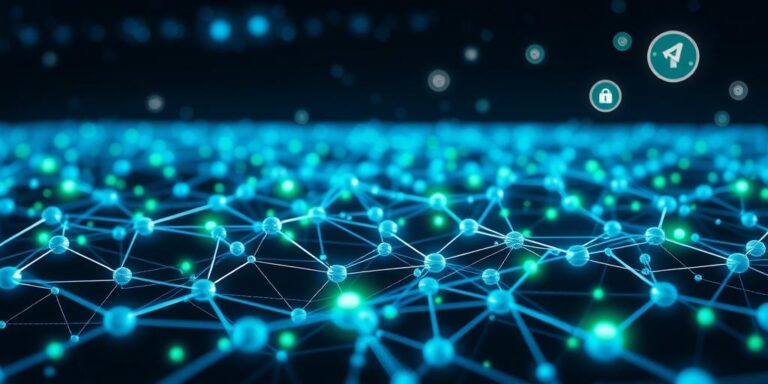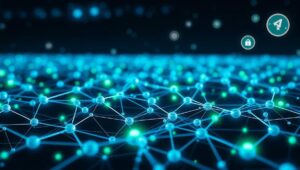Smart Grids and Energy Management with IoT (2025 Efficiency)
The convergence of smart grids and the Internet of Things (IoT) is revolutionizing energy management, paving the way for unprecedented efficiency gains by 2025. This article delves into the transformative impact of IoT on smart grids, exploring key applications, benefits, and future trends.
Understanding Smart Grids
Smart grids represent an evolution of traditional power grids, integrating advanced technologies such as sensors, communication networks, and data analytics to enhance grid performance. Unlike conventional grids that operate unidirectionally, smart grids facilitate two-way communication between energy providers and consumers, enabling real-time monitoring, control, and optimization of energy flow.
The Role of IoT in Smart Grids
IoT plays a pivotal role in enhancing the capabilities of smart grids by connecting various devices and systems, fostering seamless data exchange and intelligent decision-making. IoT devices, including smart meters, sensors, and actuators, are deployed throughout the grid infrastructure to collect granular data on energy consumption, grid conditions, and equipment performance.
Key Applications of IoT in Smart Grids
- Smart Metering: IoT-enabled smart meters provide real-time data on energy usage, empowering consumers to monitor their consumption patterns and make informed decisions to optimize energy efficiency. Utilities can leverage smart meter data to improve demand forecasting, detect anomalies, and enhance grid stability.
- Grid Monitoring and Control: IoT sensors deployed across the grid infrastructure continuously monitor critical parameters such as voltage, current, and temperature, enabling real-time visibility into grid conditions. This allows grid operators to detect and respond to faults, prevent outages, and optimize grid performance.
- Demand Response: IoT facilitates demand response programs, enabling utilities to incentivize consumers to reduce energy consumption during peak demand periods. Smart thermostats and other IoT devices can automatically adjust energy usage based on grid conditions and consumer preferences, helping to balance supply and demand.
- Renewable Energy Integration: IoT enables the seamless integration of distributed renewable energy sources such as solar and wind power into the grid. Smart inverters and monitoring systems optimize the performance of renewable energy assets, while grid operators can leverage IoT data to manage intermittency and ensure grid stability.
Benefits of IoT-Enabled Smart Grids
The integration of IoT into smart grids offers a multitude of benefits, including:
- Enhanced Efficiency: Real-time monitoring and control of energy flow optimize grid operations, reducing energy waste and improving overall efficiency.
- Improved Reliability: Predictive maintenance and fault detection capabilities minimize downtime and enhance grid reliability.
- Reduced Costs: Optimized energy usage and reduced operational expenses translate into cost savings for both utilities and consumers.
- Greater Sustainability: Integration of renewable energy sources promotes a cleaner and more sustainable energy future.
Challenges and Considerations
Despite the numerous benefits, the widespread adoption of IoT in smart grids presents several challenges:
- Data Security and Privacy: The proliferation of connected devices increases the risk of cyberattacks and data breaches. Robust security measures are essential to protect sensitive data and ensure grid resilience.
- Interoperability: Ensuring seamless communication and data exchange between diverse IoT devices and systems requires standardized protocols and interoperability frameworks.
- Scalability: As the number of connected devices continues to grow, smart grid infrastructure must be scalable to accommodate increasing data volumes and communication demands.
Future Trends
Looking ahead, the future of smart grids and energy management will be shaped by several key trends:
- Edge Computing: Processing data closer to the source reduces latency and improves real-time decision-making capabilities.
- Artificial Intelligence (AI): AI-powered analytics enhance grid optimization, predictive maintenance, and demand forecasting.
- Blockchain Technology: Blockchain enables secure and transparent energy trading and peer-to-peer energy sharing.
Conclusion
The integration of IoT into smart grids holds immense potential to transform energy management and drive unprecedented efficiency gains by 2025. By leveraging the power of connected devices, data analytics, and intelligent control systems, utilities can optimize grid operations, improve reliability, reduce costs, and promote a more sustainable energy future. Addressing the challenges related to security, interoperability, and scalability will be crucial to realizing the full potential of IoT-enabled smart grids.




